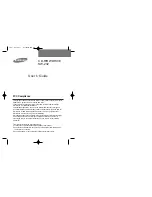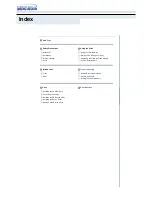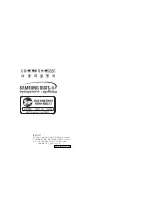
3.3 Install the rotating seal parts on the shaft or sleeve one piece
at a time:
• Inner rotating face with rotating face gasket O-ring.
• Single coil spring.
• Outer rotating face with rotating face gasket O-ring.
3.4 Wipe the seal faces clean with alcohol. Seal faces should not be
lubricated but should be left clean and dry. Position the rotating
seal parts as close to their final axial position as possible with
the inner rotating face sealing surface in contact with the inner
stationary sealing face.
Caution: Consult material safety data sheets for proper handling
of alcohol.
3.5 Lubricate the remaining stationary face seat gasket O-ring with
water or soap solution and nest this O-ring in the gland cavity.
Press the stationary face into the gland with the stationary
sealing face orientated toward the inboard side of the gland. Use
hand pressure only. Wipe the sealing face clean with alcohol.
3.6 Position the gland over the shaft or sleeve with the stationary
face oriented toward the seal chamber (stuffing box). Do not
bump the stationary face against the shaft as it may chip, crack,
or break. With the gland and/or stationary face pilot properly
engaged, tighten the gland stud nuts up evenly, cross staggering
the adjustment of the nuts. The gland nuts should be torqued to a
maximum of 13 N-m (10 ft-lbs). Excessive gland nut pressure can
result in distortion of the stationary face. Adjust the bearings,
coupling, and impeller so that the shaft is in its operating
axial position. The rotating seal parts will automatically position
themselves, subsequent axial adjustment of the shaft does not
require resetting of the seal.
3.7 See section 4, Operational Recommendations, before starting
pump.
5


























